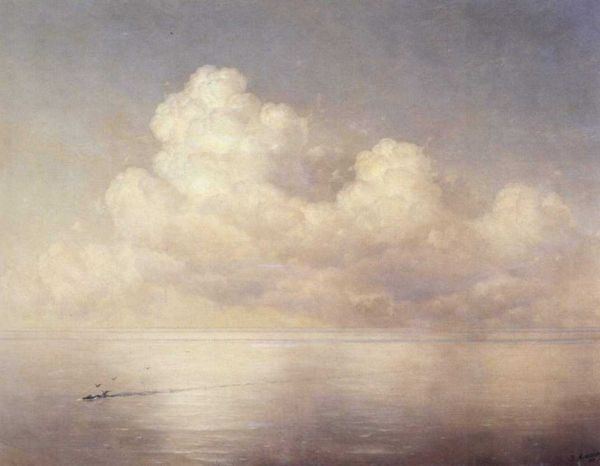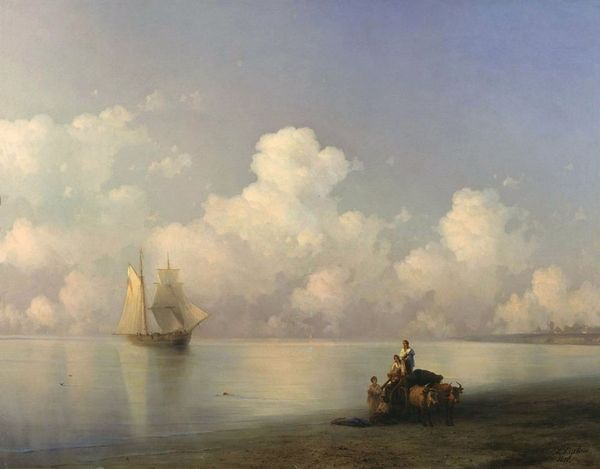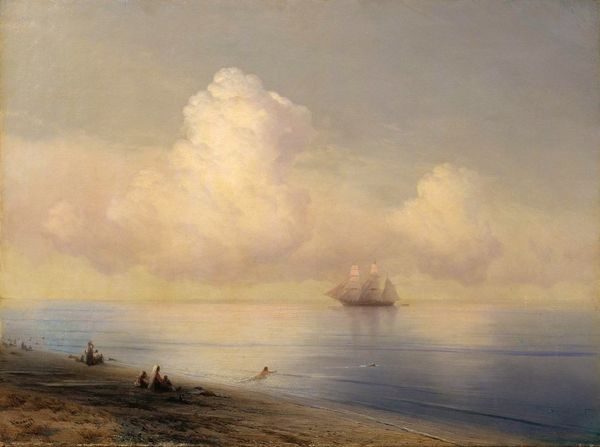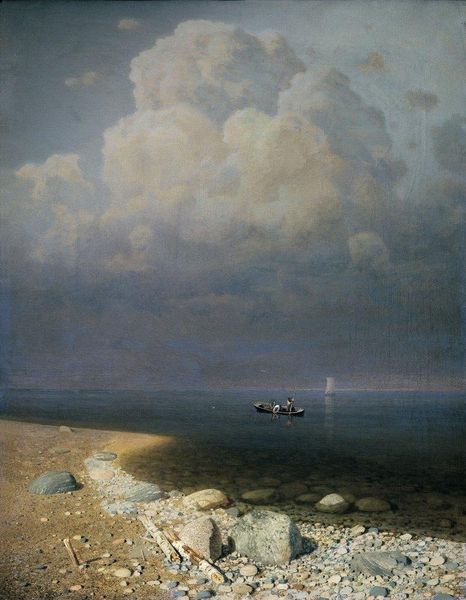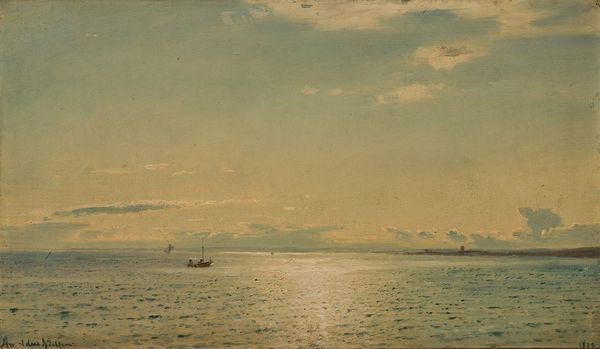
Copyright: Public domain
This seascape was painted by Ivan Konstantinovich Aivazovsky in the 19th century. Dominating the canvas is a large, billowing cloud, a symbol of the sublime, of nature's overwhelming power, but here, it floats peacefully over the calm sea. Consider the cloud—a motif that transcends cultures. In ancient Greece, clouds might represent the dwelling place of the gods, while in Renaissance paintings, they could symbolize divine intervention. We find echoes of this symbolism in Aivazovsky's work. The cloud suggests a connection between the earthly realm and something larger, perhaps spiritual. But how has this symbol evolved? In contemporary art, clouds might represent something as mundane as weather patterns. Aivazovsky uses the cloud to convey the romantic vision of nature, which is not separate from us, but a part of our human experience, engaging our psyche on a profound level. The cloud persists, resurfacing throughout history and art. It is constantly being reshaped by cultural context, collective memory, and the subconscious.
Comments
No comments
Be the first to comment and join the conversation on the ultimate creative platform.

